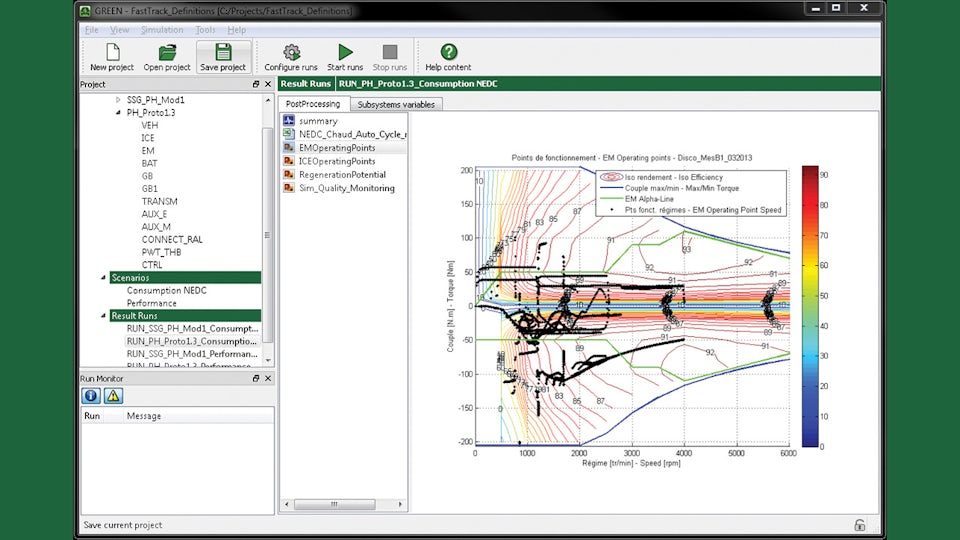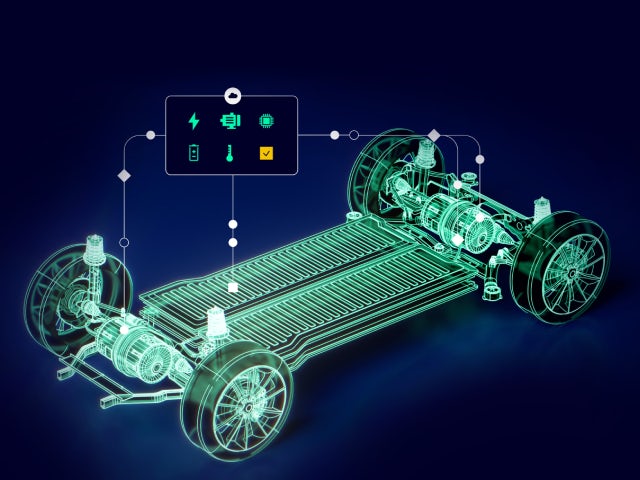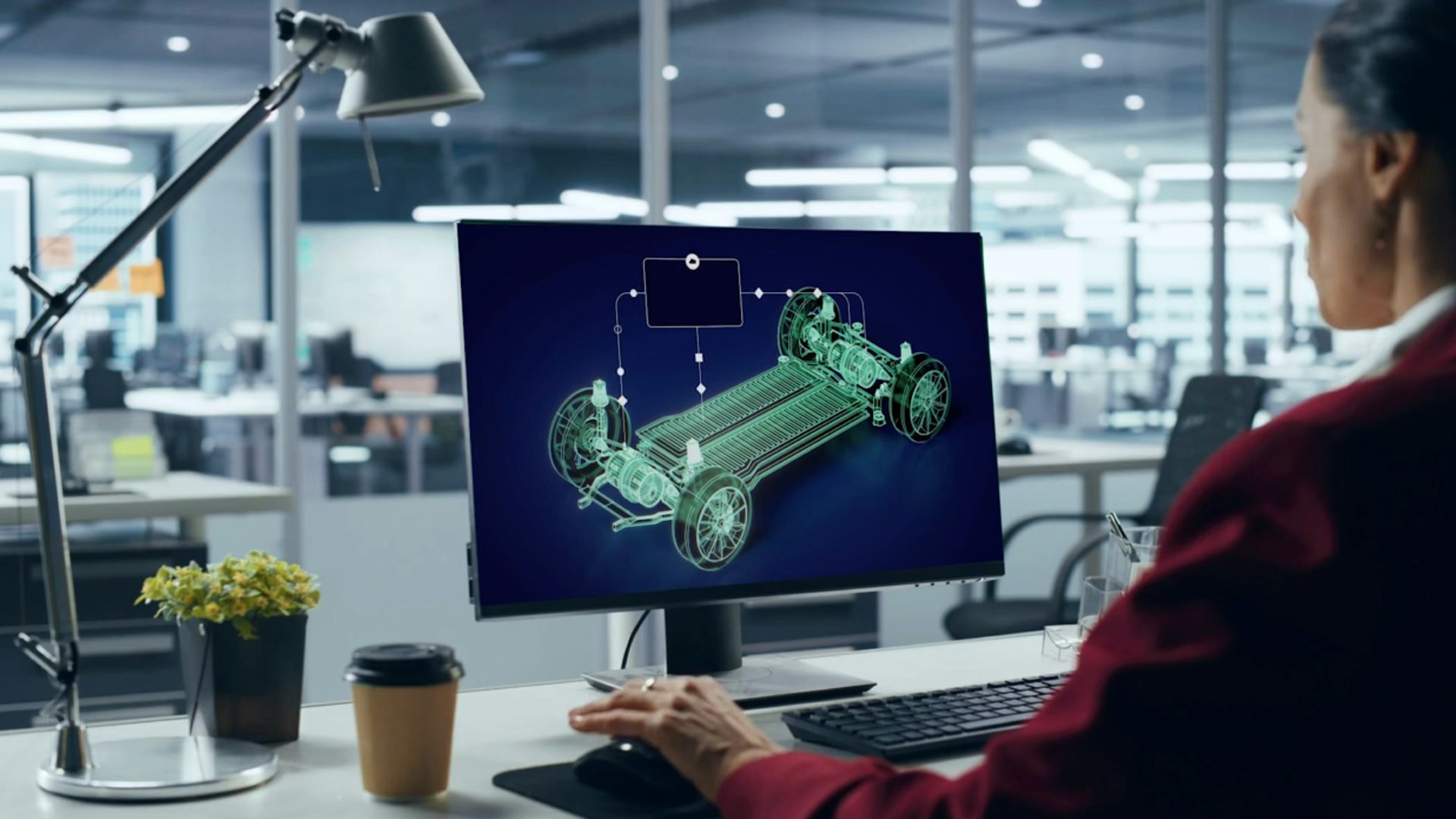How can you improve your electric vehicle development?
Your competitive edge relies on quickly getting to market with a full line up of long-range, safe and comfortable electrical vehicles (EVs). How do you do this and deliver what your customers actually want?
Launch a product engineering environment that accelerates EV design, verification and validation. Implement a system that considers manufacturing implications upfront.
Ensure manufacturing flexibility, accuracy and quality
Accelerate electric vehicle innovation and production while meeting environmental targets and satisfying consumer demand.
Production line simulation accuracy
Improve the quality and accuracy of production line designs by simulating, allowing you to identify defects and problems and make necessary corrections before real production. (MINO)
Reduction in initial vehicle assessment cycle time
Create a digital thread and comprehensive digital twin for new and on-going vehicle projects to quickly develop safe and functional mobility solutions. (NEVS)
More time for new product development
Eliminate assembly errors, streamline processes, and re-use designs with ease to save time that can be reinvested into innovative product development efforts. (Cabycal)
Shorten your development cycle
How can you bring a full range of safe, comfortable, fully featured vehicles to market faster than your competitors?
Explore the three key areas of electric vehicle design. Our solutions are developed to meet your needs in each of these areas:
Learn how the Siemens vehicle electrification solution offers an integrated virtual environment to speed up EV development while integrating new energy systems and complex features, enabling:
- Enhanced decision making through continuous value chain collaboration
- Faster development by maximizing the reuse of prior design components
- Reduced errors with a model-based, correct-by-construction design approach
- Operational excellence by sharing product information with the manufacturing team earlier
Develop robust designs by using multi-physics models of complex systems such as batteries and ePowertrain. Maximize range, comfort, performance, and safety with multi-attribute optimization across all systems.
In the race to electrify transportation, manufacturers face unprecedented challenges in meeting customer demands for high-quality, efficient and technologically advanced electric vehicles. Discover how you can accelerate the introduction of multiple high-quality electric vehicles to satisfy all your customers' needs by implementing smarter manufacturing.
Run more efficient vehicle electrification projects
Design iterations within an hour
Get ample time to create a mature design early in the process. (NEVS)
Reduction in project cycles
By collaborating with automakers throughout the planning, simulation and commissioning stages, project cycles can be reduced by up to 20-30%. (MINO case study)
More time for new product development
Research and testing new lines helps launch more products to the market faster. (Cabycal case study)
Renault (GREEN)

Renault streamlines future hybrid and electric vehicle development using Simcenter Amesim
Company:Renault (GREEN)
Industry:Automotive & transportation
Location:Boulogne-Billancourt , France
Siemens Software:Simcenter 3D Solutions, Simcenter Amesim
The GREEN platform powered by Simcenter Amesim is meant to unite different expertise domains and different systems engineers, and enables teams that never collaborated to sit together and communicate on their engineering issues to find common solutions.
Explore our resource library
How can you accelerate EV development while also introducing the models and features that will drive consumers to your brand?

Solutions to accelerate vehicle electrification
Composite product design
E/E systems development
Performance engineering
Manufacturing process planning
Frequently asked questions
What are the benefits of vehicle electrification?
The electrification of vehicles presents a host of advantages for manufacturers in the automotive industry. Embracing electric vehicle technology allows manufacturers to align with global sustainability initiatives, establishing their brand as one focused on supplying the growing demand for eco-friendly alternatives. Additionally, the simplified drivetrain of electric vehicles, with fewer moving parts, leads to streamlined production processes, reducing manufacturing complexity and potentially lowering production costs.
As governments worldwide incentivize the development and production of electric vehicles, manufacturers stand to benefit from financial incentives and tax breaks, fostering a favorable business environment. Being at the forefront of EV innovation positions manufacturers as industry leaders, opening up new markets and attracting environmentally-conscious consumers. By incorporating electrification into their portfolios, manufacturers can leverage these benefits to drive growth, enhance brand reputation, and contribute to a more sustainable automotive future.
How do you rapidly integrate design elements from previous platforms?
To rapidly integrate design elements from previous platforms, utilize our comprehensive suite of design and engineering tools. Our solutions facilitate efficient collaboration, reuse of design data, and streamline the integration process. Key steps include:
- Digitalization and PLM solutions: We provide product lifecycle management (PLM) tools that enable a digital thread across the product development process. This allows for seamless integration of design elements from previous platforms, ensuring data consistency and accuracy.
- CAD software: We offer advanced computer-aided design (CAD) software, allowing engineers to efficiently model and modify components. Utilizing parametric design features and standardized libraries helps accelerate the integration of proven design elements.
- Simulation and validation tools: We offer simulation and validation tools to assess the performance of integrated design elements. This ensures that modifications align with performance requirements and regulatory standards, reducing the risk of errors.
- Collaboration platforms: We emphasize collaboration tools that facilitate communication among cross-functional teams. This promotes a collaborative environment, enabling rapid decision making and problem solving during the integration process.
- Knowledge reuse: We advocate for knowledge reuse through digitalization. By capturing and documenting design and engineering knowledge, teams can leverage proven solutions from previous platforms, saving time and resources.
How do you meet strict environmental targets and satisfy consumer demand?
Meeting strict environmental targets while satisfying consumer demand in the EV industry requires a strategic approach that balances sustainability with consumer expectations. We help you address this challenge through:
- Comprehensive electrification solutions: We offer a holistic suite of electrification solutions, covering everything from efficient energy storage systems to smart charging infrastructure. This ensures that the entire EV ecosystem aligns with environmental goals while meeting the growing demand for electric mobility.
- Collaboration for sustainability: We collaborate with automotive manufacturers to integrate eco-friendly practices into the entire supply chain. This involves working closely with suppliers to ensure sustainable sourcing of materials and promoting environmentally conscious manufacturing processes.
- Customization for consumer preferences: We recognize the importance of consumer satisfaction and tailor electrification solutions to meet diverse consumer preferences. This includes developing electric vehicles with extended range, fast-charging capabilities and advanced features, aligning with what modern consumers seek in their vehicles.
- Data-driven decision-making: We employ data-driven analytics to understand market trends and consumer behavior. This helps manufacturers make informed decisions on product development, ensuring that environmentally friendly features are aligned with consumer demands.
What are the challenges in electric vehicle development and how can Siemens help?
The EV industry faces several challenges in development, ranging from battery technology limitations to charging infrastructure.
- We support electric vehicle manufacturers in optimizing their production processes through advanced automation and digitalization solutions. This helps streamline manufacturing, improve efficiency and reduce costs in the production of electric vehicles.
- Another major obstacle is the development of efficient and cost-effective batteries with extended range and lifespan. We offer cutting-edge battery technologies and systems that enhance the performance and longevity of electric vehicles.
- Charging infrastructure is another challenge, with the need for widespread and fast-charging networks. We address this by providing smart and scalable charging solutions, contributing to the expansion of reliable charging infrastructure globally.
- Siemens supports electric vehicle manufacturers in optimizing their production processes through advanced automation and digitalization solutions. This helps streamline manufacturing, improve efficiency and reduce costs in the production of electric vehicles.
- In the realm of electric mobility, we serve as a strategic partner, offering a comprehensive suite of solutions to tackle challenges in battery technology, charging infrastructure and manufacturing processes. By leveraging Siemens' expertise, electric vehicle developers can navigate the complexities of the industry and accelerate the transition to a sustainable and efficient electric transportation ecosystem.
Learn more
Watch
Video | Electrify the future of automotive with Siemens vehicle electrification
Video | Collaborative virtual development environment
Video | Comprehensive design and optimization simulation
Listen
Podcast | Digitalization and the future of vehicle performance engineering
Podcast | Navigating sustainability in the automotive industry
Read
Ebook | Transforming manufacturing planning in the EV era
Ebook | Accelerate EV development with comprehensive design and simulation
White paper | Transforming the future of automotive with a solution for E/E systems development
